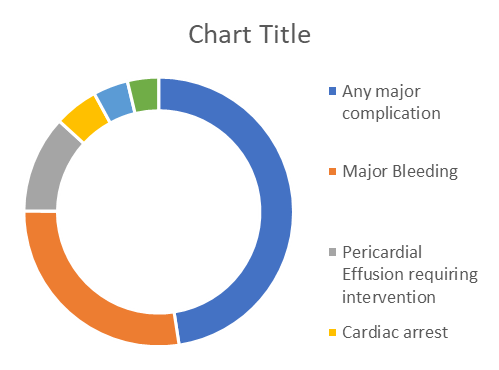Case Presentation: Contradictory to stroke prevention by left atrial appendage occlusion (LAAO) device, we present a case of a gentleman who suffered an air embolic stroke in the right fronto-temporal region during the procedure. 66-year-old male with a history of atrial fibrillation was undergoing LAAO device procedure. Air was noticed in his left ventricle which was aspirated. One hour after the procedure when sedation weaned off, the patient noticed weakness in his left sided upper and lower extremity. Computed tomographic (CT) image of head showed subarachnoid air in the right cortical area along with concomitant edema. Magnetic resolution image (MRI) confirmed air in the right middle cerebral artery. The patient was urgently managed with hyperbaric oxygen for 6 hours. During oxygen therapy he developed seizure and had to be intubated for airway protection, prolonging his hospitalization. Patient’s neurological symptoms almost resolved at discharge.
Discussion: Cerebral air emboli is an uncommon entity, its occurrence is seen in iatrogenic situations like arterial catheterization, lung biopsy or cardiopulmonary bypass. Procedures like injecting agitated saline, defibrillator placement or transvenous pacemaker can introduce air into venous system which can travel to arterial side in presence of shunt. Prompt identification and elimination of the source of air emboli is necessary. The patient must be placed in a Trendelenburg position to prevent the emboli from traveling into the brain. The right lateral decubitus position helps trapping the air in the right atrium and ventricle limiting it to the venous side. An ischemic brain infarct requires treatment with hyperbaric oxygen. There must be no delay in treatment even in the absence of radiologic evidence. 100% oxygen displaces the room air emboli which contains more than 70% of nitrous oxide. Prognosis is good if prompt treatment is initiated, 42% patients go home with neurological deficits. Poor prognosis and mortality are highly likely if oxygen therapy is delayed.
Conclusions: Cerebral air emboli is a rare entity, commonly iatrogenic, not usually associated with left atrial occlusion device procedure. Hyperbaric oxygen therapy is the mainstay and must be initiated even in the absence of a radiologic evidence of air emboli.


